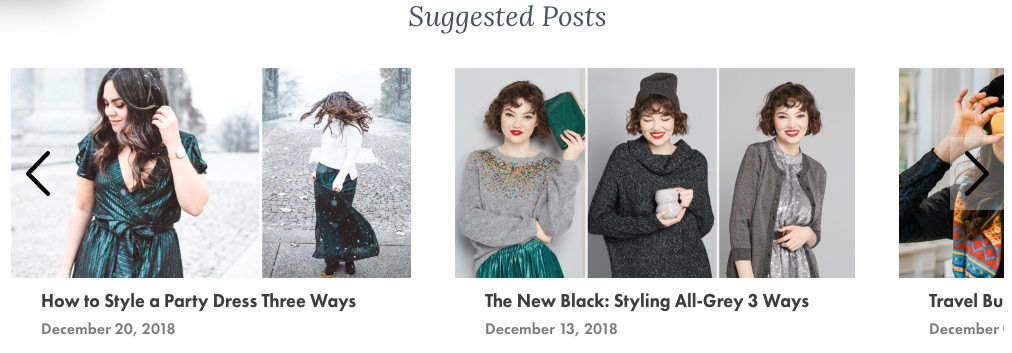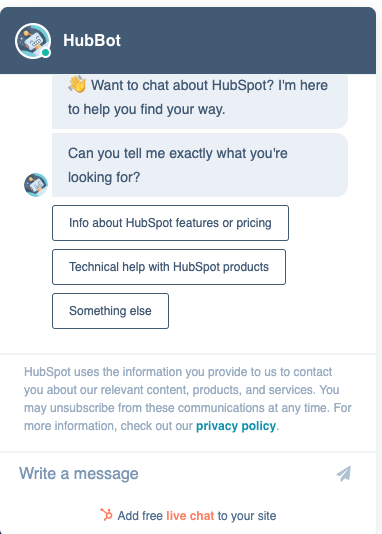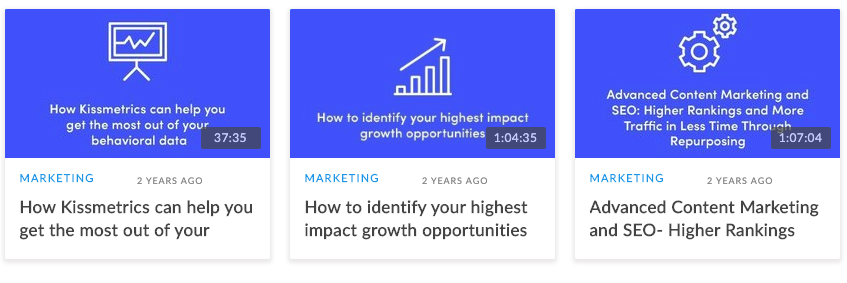There are thousands of articles online right now that will tell you how and why B2B marketing is different than marketing directly to consumers. Most marketing managers know B2B marketing requires a certain nuance in the methods and message. While this is true, B2B marketing strategies often have the same flaws that B2C strategies do. A big one is making sure your company is targeting the right potential customer with the right message.
Table of Contents
- How are B2B marketing strategies different?
- Does inbound marketing work for B2B?
- Developing B2B marketing strategies: think like a sales manager
- Answer questions your customers are asking
- A good B2B marketing strategy requires the right tools
- Are we really all that different?
How are B2B marketing strategies different?
B2B, or business-to-business marketing consists of strategies and techniques used to promote one company’s products or services to another business. If you’re selling something to a business that they will in turn use to run or improve their business, then you’re probably a B2B company.
In many cases, a company is selling to another business within the same field. Marketing departments are targeting people who are already familiar with an industry and there can be less of a learning curve when it comes to understanding products and identifying solutions to problems. Other companies may find their struggles come from having a market solution to a problem most businesses don’t yet know about.
The key is to really study your ideal customer by creating buyer personas. This will help you create content with the messages these audiences want to hear.
Does inbound marketing work for B2B?
Of course. Inbound is based on the idea that your marketing efforts should generate enthusiasm for your business by providing answers to questions potential customers are asking, and by making happy customers into brand ambassadors. It’s a concept the CEO of the marketing and sales software company HubSpot, Brian Halligan, refers to as the flywheel.
 By creating content and messaging that attracts leads, engages them with useful information they are looking for, and delights them enough to close the sale of your service or product, you can create momentum that will propel your business toward growth. It’s really just a way of redefining the sales funnel so that marketers can be more effective at attracting new leads, moving the lead toward sale, and then once a sale is closed, retaining that happy customer and using their feedback to attract new leads.
By creating content and messaging that attracts leads, engages them with useful information they are looking for, and delights them enough to close the sale of your service or product, you can create momentum that will propel your business toward growth. It’s really just a way of redefining the sales funnel so that marketers can be more effective at attracting new leads, moving the lead toward sale, and then once a sale is closed, retaining that happy customer and using their feedback to attract new leads.
Having an inbound mindset when creating your B2B marketing strategy can be an effective way to reach you target audience and earn loyalty in customers.
Developing B2B marketing strategies: think like a sales manager
To effectively use inbound marketing methods in B2B marketing strategies, the first step is to talk to your sales team. I know. I know. Sales doesn’t always get the work you’re trying to do, but trust us. Getting sales onboard with your marketing efforts will ultimately lead to more sales, and isn’t that what everyone wants?
Ask your sales manager and members of the sales team to list the top 10 questions they get from customers. Use these questions to develop a list of keywords to rank for and use them in your online content. Most importantly, create content, whether it is a webinar, blog post, or video, that quickly and directly answers these customer questions.
The youth-driven online clothes retailer ModCloth does this well with its blog. Although this is a B2C company, the concept of answering questions is the same. On this blog, you will find content about fashion trends, what influencers are wearing, and “True Love Stories” which uses the hashtag #MarriedInModCloth.
 This post features the company’s spring line of unique fabric patterns. Within the post it answers questions like:
This post features the company’s spring line of unique fabric patterns. Within the post it answers questions like:
- What are the outfits in the collection shoppers should keep an eye out for?
- Where would you wear the outfits in this collection?
Other posts highlight ModCloth’s merchandise and its versatility, addressing a major pain point for ModCloth’s primary audience: cost-conscious young women. Why buy a fancy party dress if I’ll only wear it once? ModCloth answers by showing it can be worn three ways.

Answer questions your customers are asking
Once you’ve compiled your questions and created some great content answering those questions, take a long, hard look at your existing content. How often are you promoting product features that your customers did not ask about? Talk to your sales team again and find out how important these features to our customers. If the answers is, “Not so much,” then make note for when you set content priorities in the future.

For example, Volkswagen offers a cooled glove box on some models which drivers can use to keep food and drinks cold while traveling. This cute blog post shows different Volkswagen drivers and what they put in their chilled glove box. While it does a nice job of putting a human face on a cool (no pun intended) product feature, it’s unlikely to drive sales or tip the balance when someone is debating, say, Toyota or Volkswagen.
Does this mean Volkswagen should ditch the chilled glove box or stop talking about it altogether? No, but the company shouldn’t make it a focus on the year’s marketing materials either. Whether B2C or B2B, asking these questions helps define priorities as you develop a marketing strategy. If your company is spending a lot of time and resources hyping features no one cares about, it’s time to shift focus.
You’ve likely heard this advice before—answer the customer’s questions—but you’d be surprised how many companies fail to see this strategy through. Too often leadership gets caught up on the content, how the company is portrayed, and showing too much to the competition. They forget that it’s not the competition who’s buying your product, it’s the person asking the questions.
A good B2B marketing strategy requires the right tools
If there’s one thing marketing and sales managers can agree on, it’s the importance of having good tools to keep track of marketing efforts and managing leads. Here are a few tools we recommend all companies integrate into their B2B marketing strategies.
CRM system
A customer relationship management (CRM) system integrates marketing and sales so everyone is using the same data to follow a contact through the entire buyer’s journey. This creates a cohesive system that keeps all users on the same page when analyzing where things are working well and where they might be breaking down as the lead moves along the buyer’s journey. With a powerful CRM system, like HubSpot, you can also automate most of your day-to-day marketing through the platform with ease.
Targeting
To attract better qualified leads, and to nurture your best leads toward sale, knowing how to use your targeting tools well is essential. Maybe you want to divide audiences by the state in which they are headquartered, and then further target those in that group who downloaded a specific piece of content. Maybe you want to set up a conditional workflow where those who click on various emails are then sent targeted follow up messages. Having good tools and a fine-tuned targeting strategy will save the marketing team time and get the sales team better leads.
Use LinkedIn better
LinkedIn is another great place to launch a hyper-targeted paid media campaign. Your target clients are on LinkedIn. And what’s more, they even specify their job titles, industry and experience level within their profiles, and with the communities and hashtags they follow. If you’re looking for a way to ensure your ad gets in front of your buyer personas, look no further than LinkedIn advertising.
Learn to chat

Chat isn’t just a pop-up or bot. Online chat and messaging features, like Facebook Messenger, and helping customers reach businesses with questions and concerns 24 hours a day 365 days a year. The chatbot from HubSpot above helps the company to qualify leads and get customers to their solution faster.
Chatbots, live chat, and messaging have all shown to increase conversions, so why wouldn’t your team want to use them? Before going live, ensure you have a clear process for answering submissions, both who will answer and what those answers will be.
Webinars
B2B customers are looking for information they can access when they want, not just during a sales meeting. Webinars have the power to provide information the customer wants and motivate a final purchase decision.
 For example, Kissmetrics, an analytics software company, has hundreds of webinars on its website offering useful information on digital marketing. There are some webinars that are higher-level for people less familiar with the company, as well as mid-funnel content about how Kissmetrics can help.
For example, Kissmetrics, an analytics software company, has hundreds of webinars on its website offering useful information on digital marketing. There are some webinars that are higher-level for people less familiar with the company, as well as mid-funnel content about how Kissmetrics can help.
Done right, webinars provide your company a chance to focus on the client’s pain points and demonstrate distinctly how your solution will benefit them. If you’re interested in more tools for B2B marketers, MobileMonkey has a great round up of some of the best.
Are we really all that different?
We’ve worked with numerous B2B companies and understand they all have their unique concerns when it comes to developing their marketing strategies, however, there are some marketing universals that can take B2B lead generation and nurturing to a new level: knowing your customers well by developing buyer personas and providing content that answers their questions and builds trust in your product as a solution. No matter who you are selling to, this strategy will help move them through the funnel.





